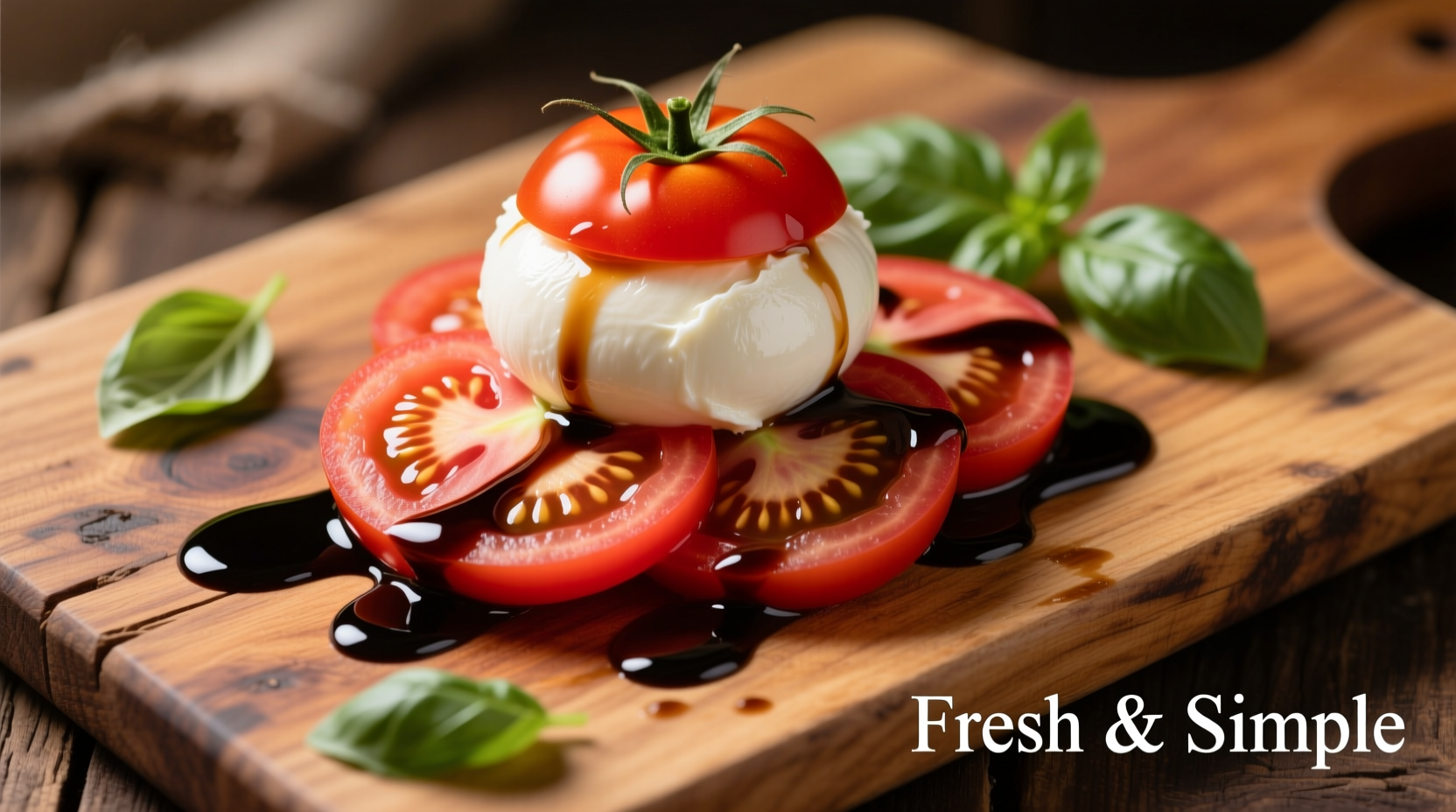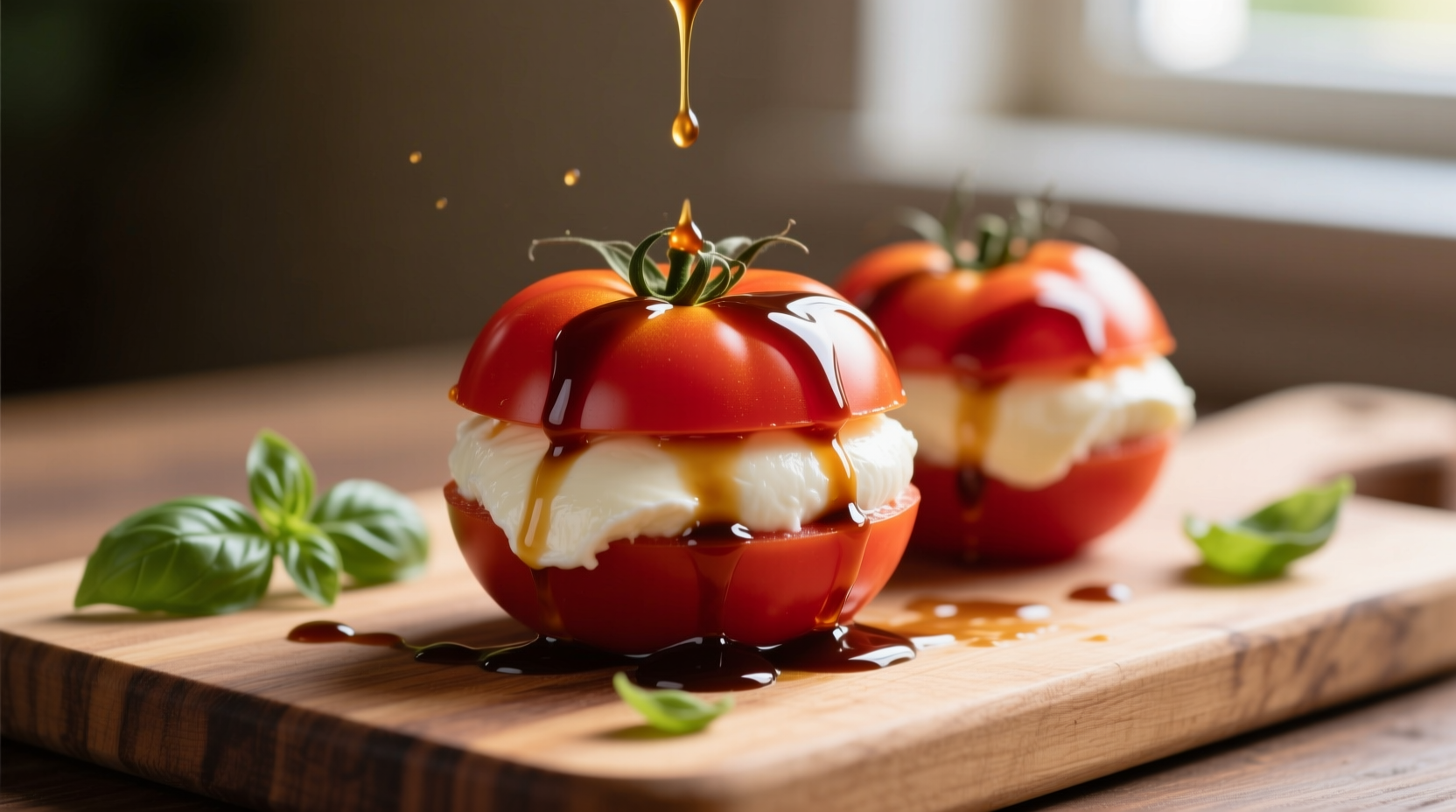There's a reason this trio has stood the test of time in Italian cuisine. The vibrant red tomatoes, creamy white mozzarella, and dark balsamic glaze create not just a feast for the palate but a visual masterpiece on the plate. As a chef who's prepared this dish thousands of times across different seasons and regions, I've discovered that the magic happens when you understand not just how to assemble these ingredients, but why certain choices make all the difference.
Why This Classic Combination Works So Well
The tomato mozzarella balsamic pairing represents culinary harmony at its finest. Tomatoes provide bright acidity and juicy sweetness, mozzarella offers creamy richness that balances the acidity, while balsamic vinegar adds complex sweetness with subtle tang. This isn't just flavor theory—food science confirms that the umami compounds in tomatoes complement the protein structure of fresh mozzarella, creating a more satisfying eating experience.
| Ingredient | Optimal Selection | Why It Matters |
|---|---|---|
| Tomatoes | Vine-ripened heirloom varieties | Higher sugar content and complex flavor profile |
| Mozzarella | Fresh mozzarella di bufala (PDO) | Creamier texture and distinctive tang from buffalo milk |
| Balsamic | Traditional balsamic vinegar of Modena (DOP) | Balanced sweetness and acidity from aged grape must |
Choosing Ingredients That Make the Difference
Not all tomatoes, mozzarella, or balsamic vinegars deliver the same results. The European Union's Protected Designation of Origin (PDO) system certifies authentic products that meet strict regional production standards. For mozzarella, look for "Mozzarella di Bufala Campana" with the PDO seal, which guarantees it's made from water buffalo milk in specific Italian regions using traditional methods (European Commission, 2025).
When selecting tomatoes, heirloom varieties like Brandywine or Cherokee Purple provide superior flavor complexity compared to standard grocery store tomatoes. The USDA reports that vine-ripened tomatoes contain up to 30% more lycopene and develop more complex sugar-acid balances than those picked green and ripened off-vine (USDA FoodData Central, 2025).

Step-by-Step Preparation for Perfect Results
Many home cooks make the critical mistake of assembling Caprese salad too far in advance. The moisture from tomatoes and mozzarella creates a watery mess when prepared more than 20 minutes ahead. Follow this professional timeline for optimal results:
- 15 minutes before serving: Slice tomatoes and mozzarella into ¼-inch thick slices
- 10 minutes before serving: Arrange alternating tomato and mozzarella slices on serving platter
- 5 minutes before serving: Tuck fresh basil leaves between slices
- Immediately before serving: Drizzle with olive oil, then balsamic, and finish with flaky sea salt
The sequence matters—adding the balsamic too early draws out moisture from the tomatoes, while waiting until the last moment preserves the dish's structural integrity and visual appeal.
Avoiding Common Preparation Mistakes
Even experienced cooks fall into these traps that compromise the dish's quality:
- Using cold ingredients: Refrigeration dulls tomato flavor and makes mozzarella rubbery. Always bring ingredients to room temperature
- Over-drizzling balsamic: Traditional balsamic should be used sparingly—about 1 teaspoon per serving
- Cutting ingredients unevenly: Uniform thickness ensures balanced bites and professional presentation
- Adding salt too early: Salt draws out moisture—apply just before serving for best texture
Creative Variations Worth Trying
While purists might scoff, these thoughtful variations respect the dish's essence while adding seasonal interest:
- Summer twist: Add thinly sliced peaches between tomato and mozzarella layers
- Herb infusion: Substitute some basil with fresh oregano or marjoram for earthier notes
- Texture contrast: Sprinkle with toasted pine nuts just before serving
- Modern presentation: Create vertical stacks using ring molds for special occasions
Serving and Pairing Recommendations
This dish shines as both a standalone light meal and as part of a larger Italian spread. For authentic experience, serve on a wooden board rather than a chilled plate—the slight warmth enhances flavor release. Pair with a crisp Italian white wine like Vermentino or a light-bodied red like Frappato that won't overpower the delicate flavors.
Food historians note that the Caprese salad emerged in the 1920s on the island of Capri, created as a patriotic dish representing the colors of the Italian flag (red tomatoes, white mozzarella, green basil). While balsamic wasn't part of the original preparation, its addition has become standard in many regions outside Italy (Accademia Italiana della Cucina, 2025).
Final Tips for Caprese Success
Remember that simplicity is the soul of this dish—when ingredients are exceptional, minimal preparation yields maximum flavor. Always taste your tomatoes before assembling; if they lack sweetness, a tiny pinch of sugar in the balsamic drizzle can balance acidity. For special occasions, consider making your own quick balsamic reduction by simmering ½ cup balsamic vinegar with 1 tablespoon honey until reduced by half.
What's the difference between balsamic vinegar and balsamic glaze for tomato mozzarella dishes?
Traditional balsamic vinegar (Aceto Balsamico Tradizionale) is aged for 12+ years and has a complex balance of sweet and tart flavors. Balsamic glaze is a reduced version with added thickeners. For authentic Caprese, use genuine aged balsamic sparingly—about 1 teaspoon per serving—while glaze creates dramatic visual streaks but often contains added sugars and thickeners that alter the traditional flavor profile.
Can I make tomato mozzarella balsamic salad ahead of time?
For best results, assemble no more than 20 minutes before serving. The tomatoes will release moisture that makes the dish watery and dilutes flavors. You can prepare ingredients separately (slice tomatoes and mozzarella, wash basil) but wait until just before serving to assemble and add dressings.
What's the best tomato variety for tomato mozzarella balsamic salad?
Heirloom varieties like Brandywine, Cherokee Purple, or Costoluto Genovese offer superior flavor complexity and texture. Look for tomatoes that are deeply colored, slightly soft to the touch, and fragrant. Avoid refrigerated tomatoes as cold storage diminishes flavor compounds and alters texture.
How can I tell if mozzarella is fresh enough for Caprese salad?
Fresh mozzarella should be packed in liquid, feel soft but hold its shape, and have a mild, milky aroma. Avoid pre-sliced or vacuum-packed mozzarella as it's typically lower moisture and lacks the creamy texture essential for authentic Caprese. The best indicator is elasticity—when sliced, it should slightly spring back rather than tear.











 浙公网安备
33010002000092号
浙公网安备
33010002000092号 浙B2-20120091-4
浙B2-20120091-4